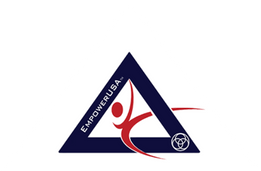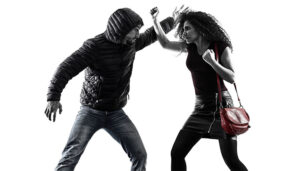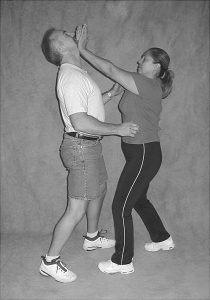Introduction
I answered the question “Could a Fitness Professional Teach Personal Safety and Self-Defense?”, with a ‘YES’! This article strives to answer the following two questions:
- Should a fitness professional become a certified personal safety and self-defense instructor?
- What are the important and necessary components for a quality personal safety and self-defense instructor certification program?
You are about to learn the:
- Personal and professional reasons why a fitness professional should become a certified self-defense instructor who can also teach personal safety concepts, tactics, and awareness, and
- Specific and detailed information that will assist a fitness professional in the research for, and evaluation of available personal safety and self-defense instructor certification programs.
The previous article defined two terms – personal safety and self-defense, providing the reader with a clear understanding of the differences between the two types of training. Personal safety training should provide in-depth information that enhances an individual’s knowledge, skills, and abilities to recognize & avoid, de-escalate, and/or exit from potentially violent situations. Self-defense training involves learning, practicing, and improving the physical skills required to maintain personal safety prior to, during or immediately after a violent situation.
Should A Fitness Professional Teach Personal Safety & Self-Defense?
There are both personal and professional reasons for a fitness professional to become formally trained to teach personal safety and self-defense.
Expanded Skills & Greater Revenue/Income Generation
Like learning new and innovative fitness training methodologies and programs, being formally trained in personal safety and self-defense can potentially:
- Open new client markets (PE programs, industry, or occupation-specific clients, etc.) who initially might only want self-defense training, but evolve into becoming regular fitness clients, too (because the trainer educates the client about how important physical fitness is to personal safety).
- More revenue can result from the new services offered to current clients and/or from an expanded market (because of the new service) for potential new clients.
Improved Level of Personal Safety
A fitness professional improves his or her own personal safety through the education and training process. The nature of an in-home trainer’s job places him or her at a higher risk than a trainer working in a club or private facility. Also, for anyone who interacts with other people in society or does any amount of traveling, there is a certain risk level (depending on many factors) to personal safety. By getting trained in personal safety and self-defense, the fitness professional enhances his or her own level of personal safety, both on and off the job.
Enhanced Mental, Emotional, Environmental and Physical Awareness
Personal safety is enhanced by developing a heightened state of:
- Mental awareness – what is happening around you,
- Emotional awareness – your own emotional state, as well as the emotional state of the people around you,
- Environmental awareness – of your surroundings,
- Physical awareness – your own physical abilities & capabilities, as well as an evaluation of the physical abilities and capabilities of the people around you.
Enhanced mental, emotional, environmental, and physical awareness will positively influence all aspects of professional and personal life.
Improved Physical Conditioning & Capabilities
Many physical benefits can be realized through self-defense training depending on how the training is implemented and executed. Due to the unique nature of this kind of training and the movements performed, some of the benefits include improved balance, agility, coordination, reaction time, cardiovascular conditioning, muscular conditioning, along with reduced negative stress. The ability to handle the “adrenaline rush” that typically occurs under highly stressful situations is also improved.
Higher Levels of Efficacy
An individual believes in him or herself, in all aspects of life, as improvements in self-confidence, self-esteem, self-respect, respect for others, communication skills, conflict resolution skills and emotional control are achieved through a properly structured, implemented and instructed personal safety and self-defense training program.
In summary, learning (and learning how to teach) personal safety and self-defense provides numerous potential personal and professional benefits for a fitness professional, including the opportunity to diversify services, generate more income and enhance their own and their clients’ mental, emotional, and physical well-being!
A previous article provided information that supported the answer to the question “Could a Fitness Professional Teach Personal Safety and Self Defense?” The answer is “YES!”
The first part of this article provided information supporting that “YES” a Fitness Professional Should Teach Personal Safety and Self Defense?” The rest of this article provides detailed information about what training components should be included in a comprehensive personal safety / self-defense instructor certification program.
What Should A Personal Safety & Self-Defense Instructor Certification Include?
At this point, it is understood that a fitness professional could and should become a personal safety and self-defense trainer. But how would a fitness professional know what a quality self-defense instructor certification program training curriculum should include? The following information identifies and describes the components of a quality personal safety and self-defense instructor certification program, thus providing the fitness professional with the ability and capability to evaluate any available programs. Read on!
Personal Safety Training
Personal safety training can be effectively delivered as a live event (in-person seminar or virtual webinar), in an online format, or as a documented educational piece. Training provided in an online or documented format is effective and provides some key benefits over live training, including:
- Convenience (time and location) – training is completed anytime and anywhere.
- Content/information accessibility – training information is (should be) available to a participant 24/7 for an extended period, allowing content review at any time.
A comprehensive personal safety/self-defense training program should address several subject areas, some of which include:
- Why Learn Personal Safety/Self Defense
- Legal Liability of Self-Defense
- Confidence & Fear
- Assailants – Who Are They?
- Preparation For and Understanding the Consequences of Conflict
- Principles of Personal Safety
- Pre-emptive Self Defense – When, Why, and How?
- Martial Arts Training versus Self Defense Training
- Fitness Training versus Self Defense Training
- Awareness Training – Mental, Emotional, Environmental and Physical
- Interpreting Body Language
- Recognition & Avoidance and/or De-escalation Techniques & Strategies
- Personal Safety Tips – In Public, At Home, In a Car & Traveling
- Personal Safety Tips – Facing a Weapon
- Predator Lures
- Personal Safety ‘Weapons’ – What You Can Use & How to Use Them
- Things a Burglar Won’t Tell You
Physical Self-Defense Skills
Physical self-defense skill training must be performed live, if possible! Learning and practicing skills by watching videos, with no practice time that includes trainer feedback, does not provide a high-level learning experience for an instructor-trainee.
- When I train instructors, I want them to see me perform the skills from every possible angle.
- And, when I observe the trainees perform the skills, I want to see their movements from every possible angle so I can accurately evaluate, correct (if necessary), adapt/modify, and/or praise their skill performance.
Live training is not always possible for a trainee. But trainer feedback on physical skill performance MUST be part of a quality self-defense instructor certification program! There are ways to make this happen – live training via virtual methods that includes trainer feedback for the trainee. Contact EmpowerUSA for more information on this option.
Think about your clients’ perspective – do they want to learn from an instructor who became ‘certified’ by watching a video only, with no practical application of skills with feedback from a highly-experienced trainer? Or would a client prefer to be trained by a certified self-defense instructor who, through comprehensive and practical experience, observes, evaluates, corrects and improves an instructor-trainee’s skills? Make sure that the “certification” title you earn has meaning behind it!
Physical Self-Defense Skill Training Components
Physical self-defense skill training should, at a minimum, include the following components:
- Positioning & Distancing – non-aggressive, but ready stance and maintaining proper distancing from an aggressor.
- Evasion movements – how to effectively and efficiently move away from an attacker.
- Re-Direction techniques – how to properly deflect or block an attacker’s grab or strike attempt.
- Striking techniques – how to maximize power, speed, and accuracy when striking, what body parts can be used for striking, and identify of the most effective target areas for the various strikes.
- Loosening/Escape techniques – how to loosen/release various types of grabs and holds.
- Self-Defense against weapons.
- Ground Defense Skills – how to apply physical techniques while on the ground.
- Environmental-specific considerations – in what environment (small room, elevator, airplane cabin, car, etc.) you might need to perform self-defense actions.
- Identification of everyday items that could be self-defense “weapons” and how to use them.
- Physical Conditioning for Self-Defense
A quality self-defense instructor certification program progressively teaches easy to learn, simple to master, practical, realistic, and effective physical strategies and techniques. It must provide the ability to observe, evaluate, correct and improve client skills with consideration for the following:
- Most people will only commit a limited time to self-defense training.
- Teach basic skills tailored to an individual’s abilities and capabilities.
- It is better to learn, teach, repetitively practice and become proficient at performing a few techniques than it is to learn, but not perfect dozens of different techniques.
- Training clients is progressive – gradually increasing in complexity (single techniques progressing to combinations of multiple movements and techniques) and intensity (speed of movement, power of movement, resistance to movement, etc.).
- Train clients to achieve maximum potential for speed, quickness, power, accuracy, etc., in technique performance.
A quality self-defense instructor certification program provides live practice time against (intensity progressive) “realistic” attacks. Instructor-trainees should progress through physical skills training by:
- Learning and practicing physical skills by initially performing them slowly against low resistance.
- As coordination and form improves, the speed and power of skill performance increases. Following is an example progression sequence:
- Striking skills performed in the air (no resistance), progressing to
- Striking skills performed against a soft foam, hand-held focus pad, progressing to.
- Striking skills performed against a lighter-weight heavy bag, progressing to a heavier-weight heavy bag.
- All skills performed against a Trainer dressed in fully padded body armor.
- Initial attacks executed slowly at low force.
- Attack intensity increases as the instructor-trainee relaxes and improves in skill performance.
- Attacks performed at full speed and power to provide a “realistic” experience of the adrenaline rush!
Note: This final step in progression (simulated attack scenarios against a padded instructor) is an extremely important part of a training program. Without experiencing a realistic attack situation, how could a self-defense instructor effectively train clients? This final training step provides an instructor-trainee with the experience and effects of the “adrenaline rush”. The instructor-trainee learns how to better handle an adrenaline rush and the impact it has on the ability to respond to a violent situation. Boxing or kickboxing fitness classes do not replicate the body’s physiological response to a violent situation! A self-defense instructor must have personal experience with this physiological response to accurately describe or teach how to handle it.
Summary
There are many personal safety and self-defense instructor certification programs available. Hopefully, a fitness professional will:
- Do the research and program evaluation necessary to find the best possible self-defense instructor certification program.
- Recognize, value and commit to the time and effort required to become the best possible professionally certified self-defense instructor.
Make sure that certificate, that states ‘certified self-defense instructor’, received after completing a training program has some meaning. And it is important that you understand that the learning process should never end! Strive to grow your knowledge and continuously improve your skills!
Teaching self-defense physical skills is very serious. What you teach your clients may put them at greater risk or it will (hopefully) enhance their abilities to maintain their personal safety. Find a quality self-defense instructor certification program and commit to the time and effort required to become a knowledgeable and highly skilled professional. You owe it to your clients to be the best that you can be!
“One Body, One Life, One Choice – Be SAFE & STRONG!




